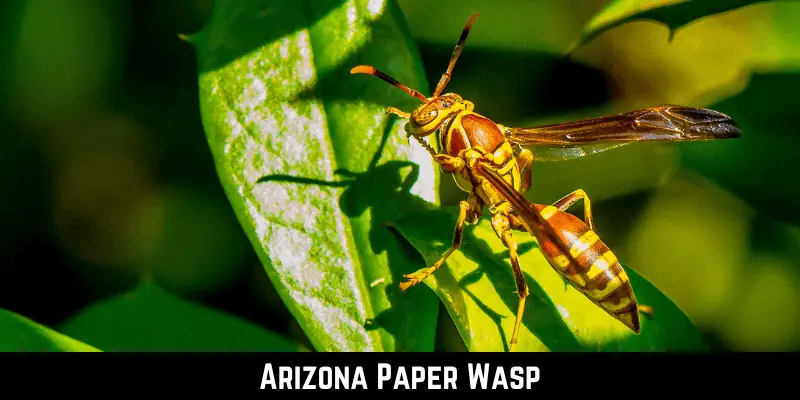In Arizona’s sunny desert, many cool animals live. One interesting bug there is the “Arizona Paper Wasp”. Have you ever seen their nests or the wasps flying around plants?
These wasps are not just regular bugs. They make special nests that look like paper and are very important for the desert. They help flowers grow and keep away bad bugs. They work together to live and change as needed.
Want to learn more about these wasps? Join us to find out more about this cool bug. Keep reading to learn about the special things in the Arizona desert.
Historical Background Of Arizona Paper Wasp
Early Sightings
In Arizona, long ago, people like settlers and native tribes noticed many animals and bugs, including the Arizona Paper Wasp. The Hopi and Navajo tribes sometimes talked about a bug that made paper-like homes. This was the wasp. Although only a few wrote about it, the stories show that people and this wasp lived together in Arizona for a long time.
The first time someone wrote about the wasp was in the late 1700s. Spanish explorers drew pictures of desert plants and wrote about the wind. They also hinted at a bug that made paper homes. This was likely the Arizona Paper Wasp. But it was only in the 1800s and 1900s that scientists studied this wasp closely.
Evolutionary Significance
The Arizona Paper Wasp is special because of how it changed to live well in the desert. The desert is hot in the day and cold at night, but the wasp’s paper home helps keep it safe from these changes. The wasp also builds its home in cool places or under plants. This helps it stay at the right temperature.
This wasp is also good at working together with other wasps. They use smells and body movements to talk to each other. This helps them do things like hunt and build homes. Because the desert is tough, working together helps them survive. The wasp also helps flowers grow and eats bad bugs. This makes the wasp important in the desert.
Physical Characteristics Of Arizona Paper Wasp
Size and Shape
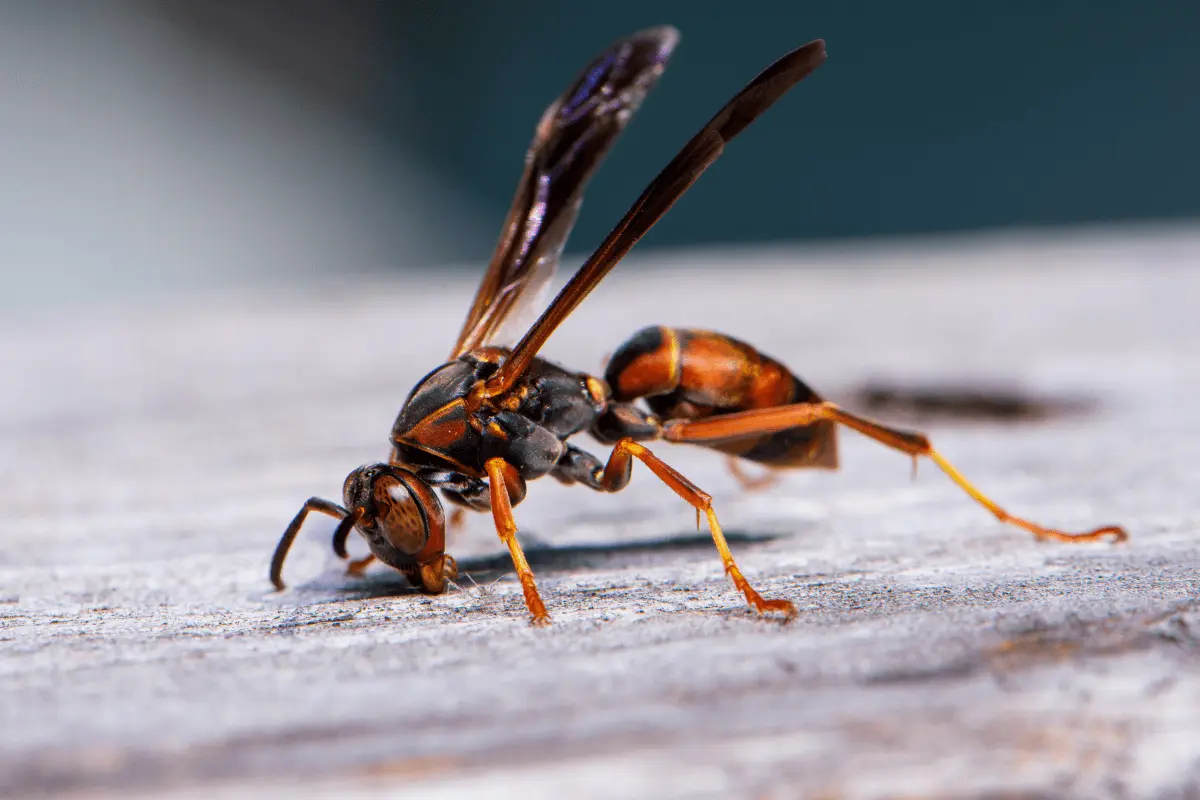
The Sonoran Desert has a special bug called the Arizona Paper Wasp. They’re not very big, usually about as long as a staple (16 to 20 millimeters). Female wasps are a bit bigger than the males.
People often say these wasps look graceful when they fly, like dancers in the sky. They have thin and clear wings that let them move quickly. One cool thing about these wasps is their waist. It’s long and thin, which makes it easy for them to build their nests or fly away from dangers.
Color Patterns
These wasps have beautiful colors. Their body is shiny and looks like the golden color of honey. If you look closely, you can see other colors, too, from gold to dark brown. The middle of their body is often a deep brown, which looks different from the lighter color on their back end.
Their wings have a special shine that can look blue or green in the light. This helps them hide among plants and flowers. They also have thin black lines on their body, like old desert drawings. These lines warn other animals: “Watch out! I can sting!” This warning is a smart way to keep safe in the wild.
Behavior and Habits Of Arizona Paper Wasp
Daily Routines
Arizona paper wasps have busy days. When the sun rises, they start their day wearing yellow and black colors. In the morning, they look for food like nectar and eat bugs like caterpillars to feed their baby wasps. Around noon, they’re busy fixing and building their nests made of chewed wood mixed with their spit. These nests show how much wasps care about their group.
Evening doesn’t mean sleep time for them. They ensure their babies are safe from nighttime dangers and see that their queen has enough to eat.
Social Behavior
These wasps are very social. They live in groups with clear jobs. The queen wasp lays the eggs. The worker wasps, who are all girls, do a lot: find food, build the nest, and care for baby wasps. Boy wasps mainly find mates. Sometimes, there can be little fights in the group, especially if a young wasp wants to become a new queen. These fights don’t last long but are fierce.
Wasps talk to each other using special smells and body moves. Some wasps even give up having their babies to help the whole group. This shows how close and caring they are as a family, making sure they keep going strong in the tough Arizona desert.
Types Of Arizona Paper Wasp
Polistes exclamans – Commonly Known As The Guinea Paper Wasp.
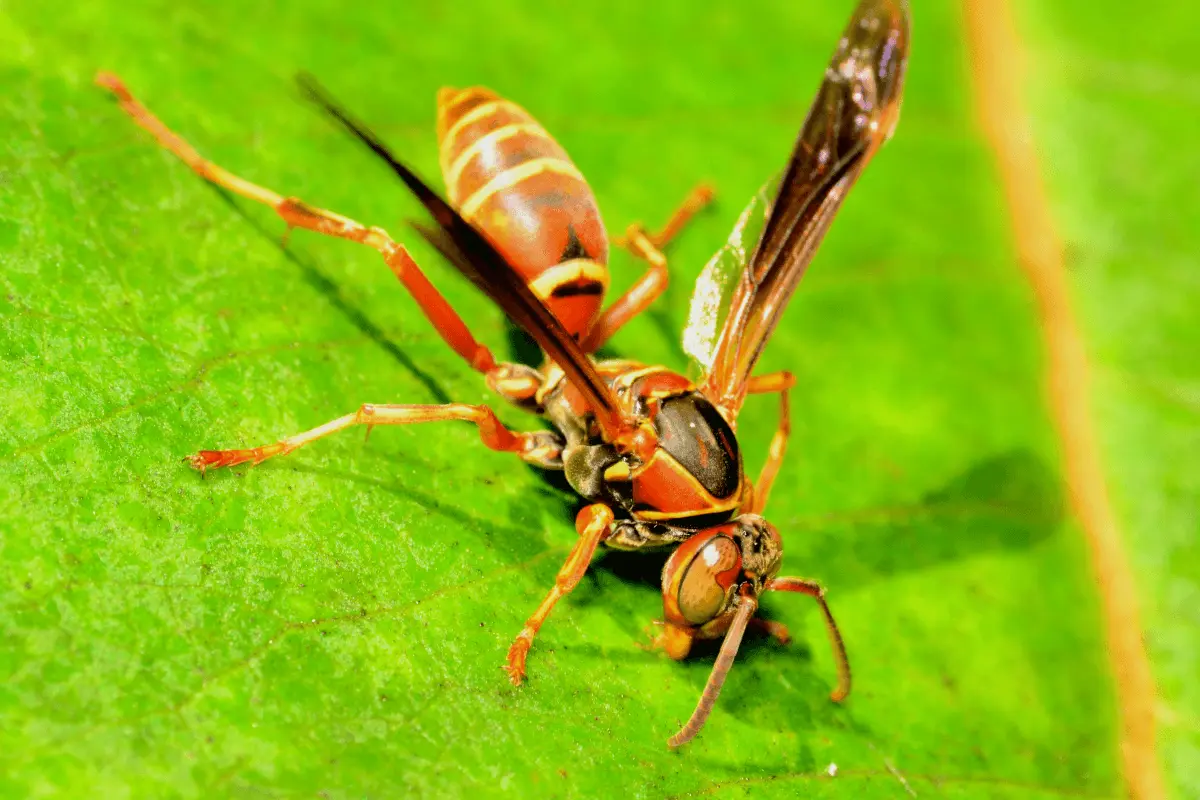
In the hot Arizona desert, the Guinea Paper Wasp is easy to spot with its brown and red colors. It looks a bit special because its back end is longer than other wasps. It’s not just pretty to look at – it’s also very good at living in different places. These wasps make homes under leaves and even in places people have built. They eat many things, from sweet nectar to bugs like caterpillars, helping to keep nature balanced.
Polistes aurifer – Often Referred To As The Golden Paper Wasp
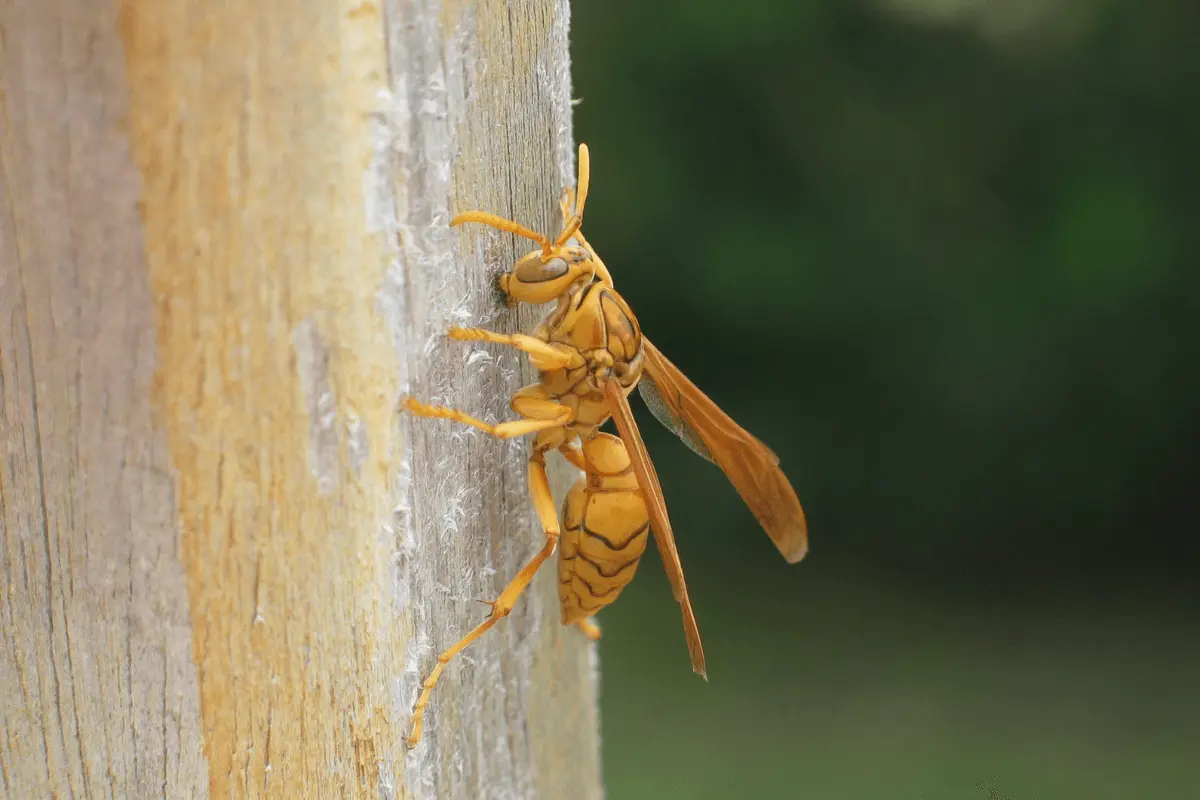
Among all the wasps in Arizona, the Golden Paper Wasp shines brightly. It looks like it’s glowing gold in the sunlight. They build their papery homes in bushes and trees. These shiny wasps help the environment by eating pests while also enjoying nectar from flowers. This helps keep everything in nature working nicely.
Polistes fuscatus – Commonly Called The Northern Paper Wasp
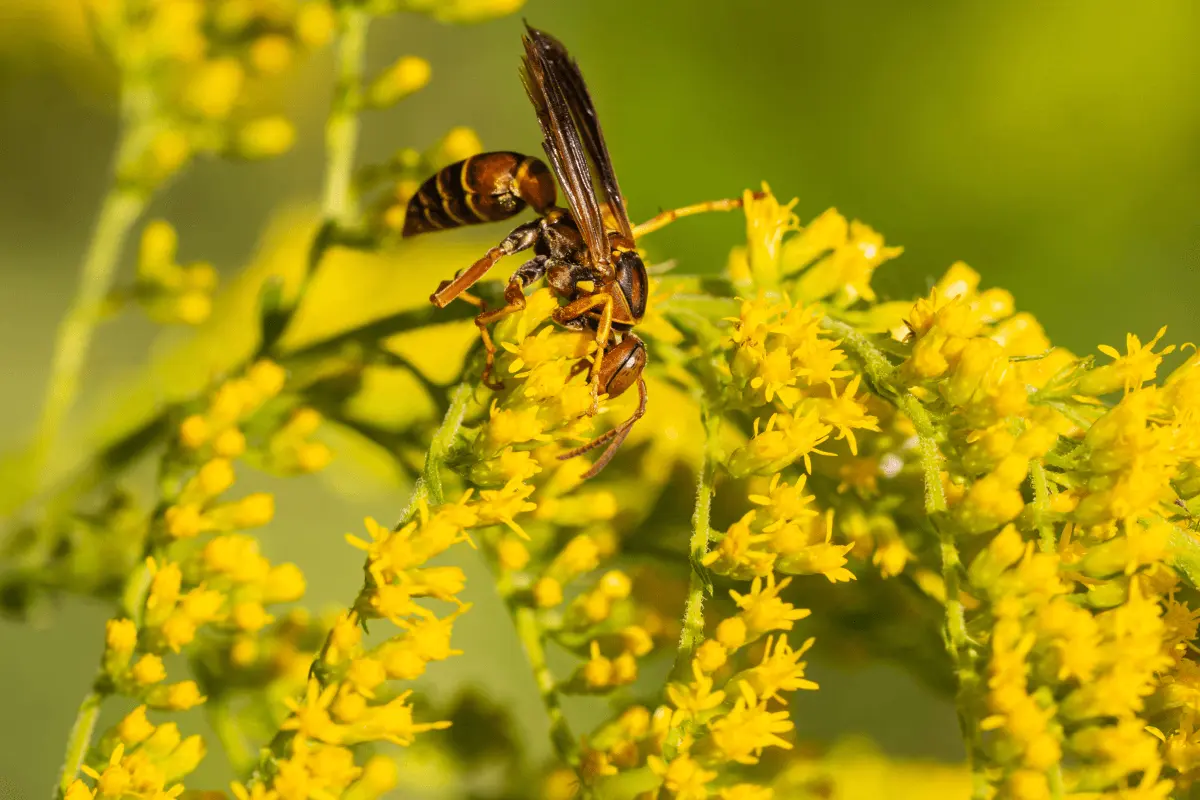
Going further north, you might see the Northern Paper Wasp. They are brown and have wings that look a bit like colored glass. These wasps are great builders and make big homes, showing they care about their group. They also know who is family and who isn’t, and they change jobs based on what their group needs. This smart behavior shows how clever and organized they are.
Polistes metricus – Known as the Dark Paper Wasp
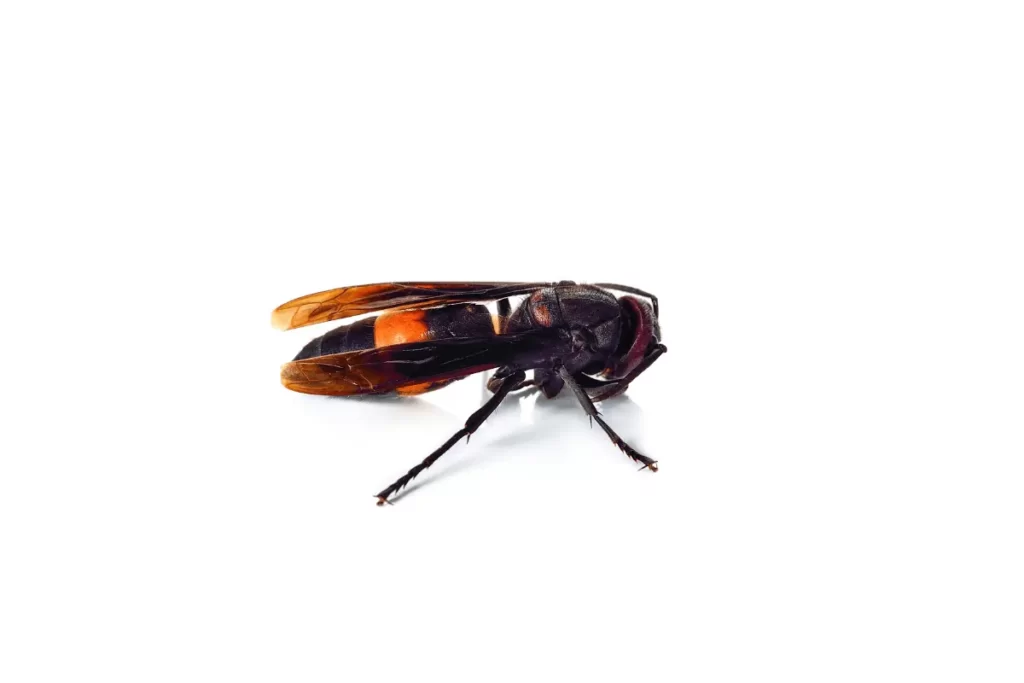
In Arizona, there’s a special wasp called the Dark Paper Wasp. It’s named for its dark color that stands out in the bright desert. It looks like a tiny piece of the night flying around during the day.
But there’s more to this wasp than just its looks. They make really cool nests that are hidden and different from other wasps. Instead of hanging down, their nests are more flat and secret. They also help the desert plants by moving pollen from one flower to another when they eat. So, they’re beautiful and very helpful in the desert.
Polistes dominula – Commonly called the European Paper Wasp
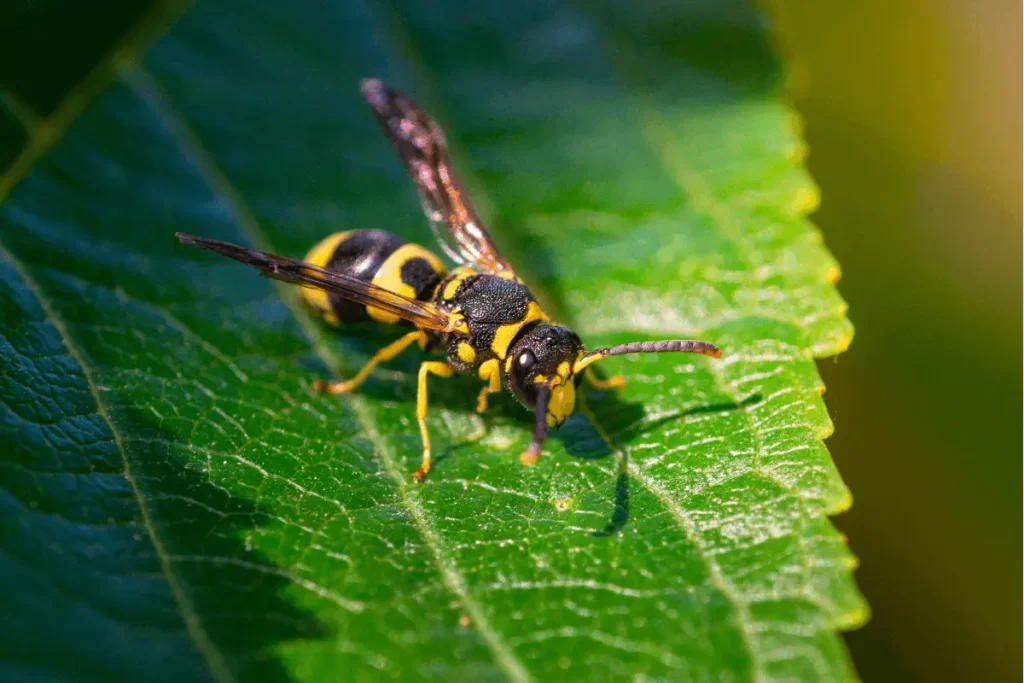
There’s another wasp in Arizona called the European Paper Wasp. It comes from Europe but now lives in Arizona, too. This shows how animals can live in different places if they adjust.
This wasp is yellow and black; some think it looks like the wasps that have always been in Arizona. But if you look closely, you can see special patterns on it. They build nests that look like honeycombs, which is different from some local wasps. Even though they’re new to Arizona, they fit right in. They help by eating pests and also help flowers grow by moving pollen around.
Habitat and Distribution Of Arizona Paper Wasp
Arizona’s Landscape And The Wasp
Arizona has beautiful deserts, flat-topped mountains, and deep canyons. In this amazing place, the Arizona paper wasp lives. When the sun rises or goes down, the wasps are busy in this colorful land. They make their homes, called nests, in trees and on rocky places. This big desert land has many flowers for them to drink from and bugs to eat. Even though the desert seems tough, it has everything the wasps need to live.
Threats To Their Habitat
But there are some problems for the wasps. People are building more houses and roads, which takes away the wasps’ natural home. Where there used to be sand and trees, now there are buildings and streets. Also, some people use sprays to kill bugs, but these sprays can also hurt the good bugs like the Arizona paper wasp.
Another big problem is the changing weather. It’s making it hard for the wasps because flowers come out at different times and there are fewer bugs to eat. So, the wasps have a lot of challenges. We need to help protect their home in the desert, not just for them but for everything that lives there.
Importance Of Arizona Paper Wasp in the Ecosystem
Role In Pollination
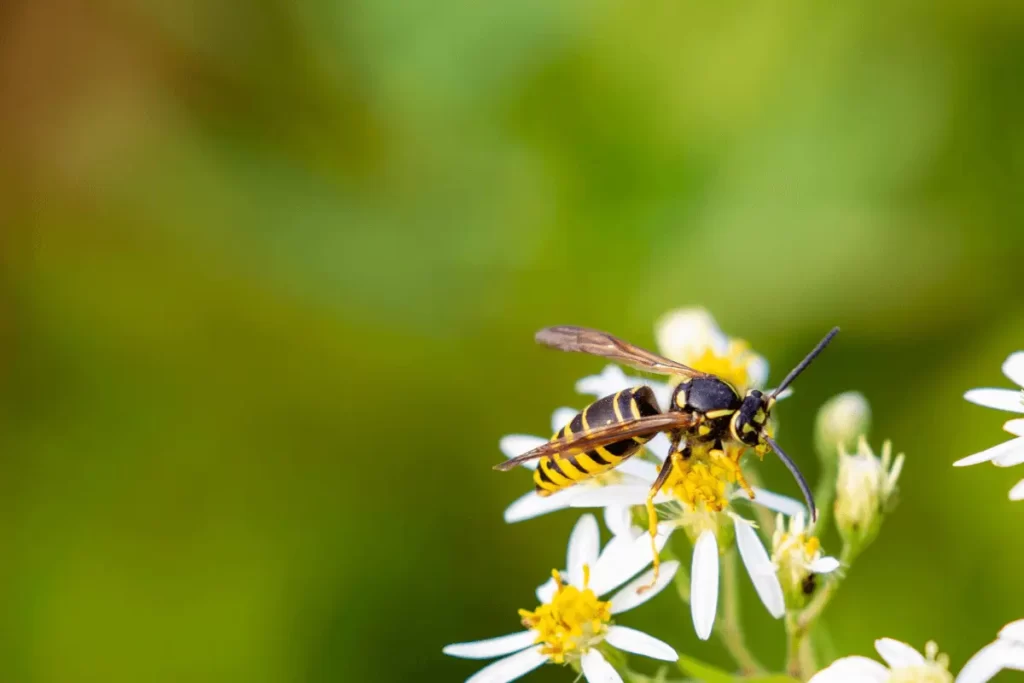
In Arizona, paper wasps play a big part in helping flowers grow. They accidentally pick up tiny pollen bits when they visit flowers to get nectar. Then, as they go to other flowers, they drop off this pollen. This process helps plants make fruits and seeds. So, by just doing their regular activities, these wasps help many plants reproduce. Thanks to the paper wasps, this means more greenery and beauty in Arizona.
Natural Predators And Balance
Paper wasps are also helpful because they eat other bugs, some of which can harm plants. They go after pests like caterpillars and aphids. By doing this, they keep our gardens safe and let plants grow well. But life isn’t always safe for the wasps. They have their own enemies, like birds and spiders, that eat them.
It’s like a big chain where everyone has a role. The paper wasps help plants and control pests, but they also provide food for other animals. This shows how everything in nature is connected. We need to understand and respect each creature’s role because they all help keep the environment healthy.
Other Wasp Types Found in The USA
You might want to know more about different wasp species in the USA, then you can find everything about these species here:
Conclusion
Arizona paper wasps are amazing insects that do much more than fly around. While some might be scared of their sting, these wasps play a big role in nature. They’ve learned how to live in the hot Arizona weather and do important jobs like helping plants grow by spreading pollen.
They build special homes, called nests, that hang from trees and look cool. These aren’t just places to live; they show how hard-working and smart these wasps are. But it’s important to remember that these wasps do more than just sting. They help control pests and play a big part in keeping nature in balance. So, instead of just thinking about their sting, we should learn more about them and appreciate all the good things they do for our environment.
FAQs
References
Sara E Miller and others, Highly Contiguous Genome Assemblies of the Guinea Paper Wasp (Polistes exclamans) and Mischocyttarus mexicanus, Genome Biology and Evolution, Volume 14, Issue 8, August 2022,evac110, https://doi.org/10.1093/gbe/evac110
Mariana Bulgarella, Alejandro E. Mieles, Jacqueline Rodríguez, Yesenia Campaña, Georgia M. Richardson, Robert A. Keyzers, Charlotte E. Causton & Philip J. Lester (2022) Integrating biochemical and behavioral approaches to develop a bait to manage the invasive yellow paper wasp Polistes versicolor (Hymenoptera, Vespidae) in the Galápagos Islands, Neotropical Biodiversity, 8:1, 271 280, DOI: 10.1080/23766808.2022.2098575
Howse MWF, Haywood J, Lester PJ. Bioclimatic Modelling Identifies Suitable Habitat for the Establishment of the Invasive European Paper Wasp (Hymenoptera: Vespidae) across the Southern Hemisphere. Insects. 2020; 11(11):784. https://doi.org/10.3390/insects11110784
